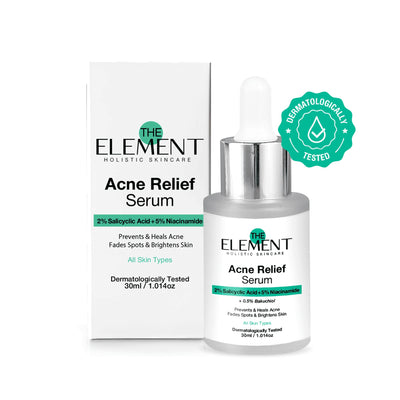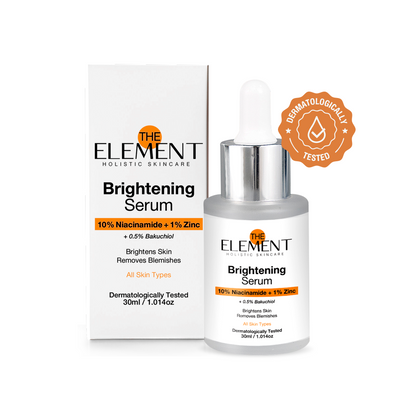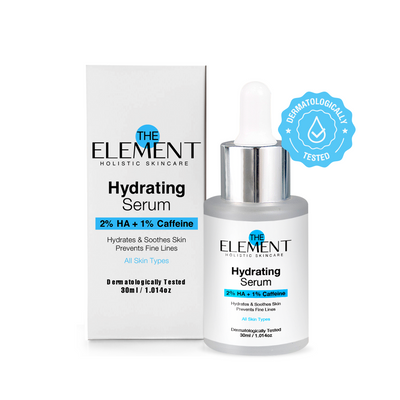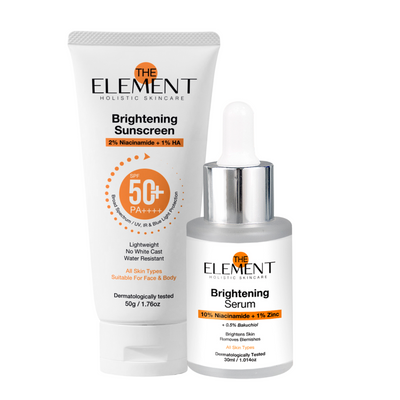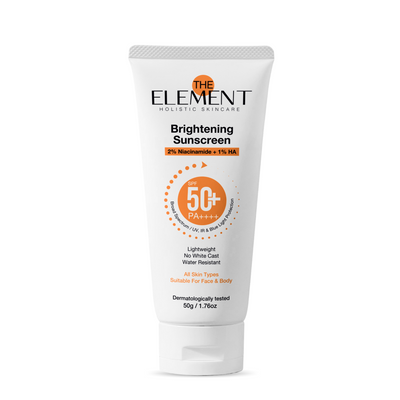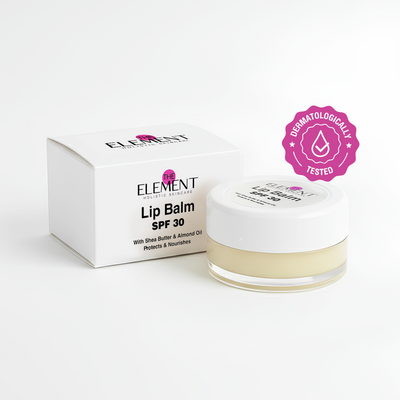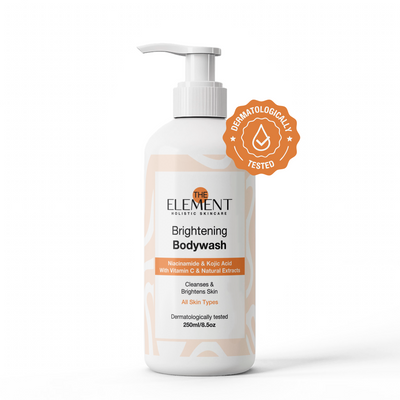Forehead Zit: Causes, Fixes, and Fast Relief for Zits on Your Forehead
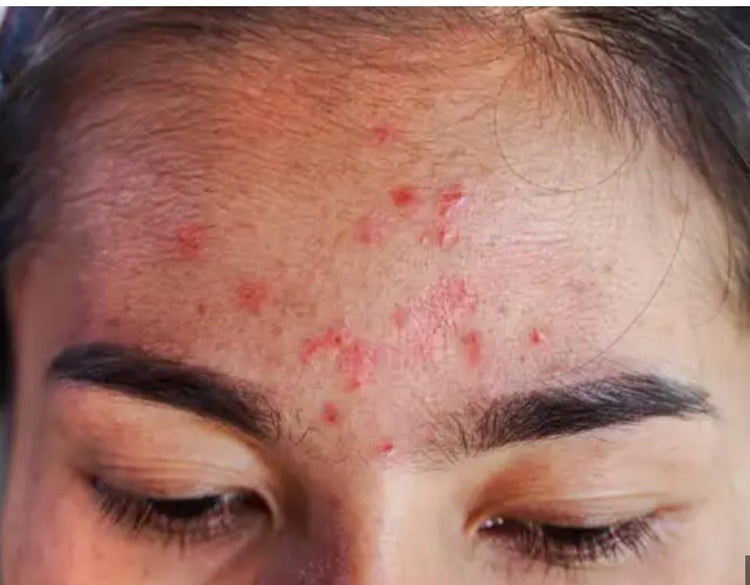
Introduction
If you keep spotting a forehead zit (or clusters of small zits on your forehead) you’re not alone. The forehead is a hotspot for breakouts thanks to oil, sweat, hair products, and friction from hats or helmets. Whether it’s a single stubborn zit on your forehead that won’t go away or a sprinkle of little zits across your hairline, this guide breaks down the real causes and the smartest fixes—so you can clear it up and keep it from coming back.
We’ll also share a simple, dermatologist-style routine and how to use a targeted serum solution from The Element to calm, clear, and prevent forehead breakouts.
At a glance
- The most common triggers of zits on the forehead are excess oil, pore clogging, sweat, hair products, and friction.
- Tiny, itchy, same-sized bumps can be “fungal acne” (Malassezia folliculitis), which needs a different approach than classic acne.
- The fastest fixes usually combine a gentle cleanser, leave-on acne actives, and consistent habits around haircare and sweat.
What causes zits on the forehead?
Forehead acne forms when pores get clogged with excess oil, dead skin, and bacteria—then inflamed. Several everyday triggers make the forehead especially vulnerable.
- Hair and hair products (pomade acne): Oils, waxes, gels, and heavy conditioners can migrate onto the forehead and clog pores. The American Academy of Dermatology notes hair-care products are a common cause of breakouts on the forehead, temples, and hairline, sometimes called “pomade acne”. Healthline echoes this, highlighting pomades, waxes, gels, and straightening products as frequent culprits and advising noncomedogenic choices and better hairline hygiene
- Sweat, heat, and friction: Helmets, caps, headbands, and sweat can create a warm, occlusive environment that traps oil and bacteria, worsening acne on the forehead.
- Stress and hormones: Stress can raise cortisol, nudging oil production up; hormonal fluctuations can also drive sebum and breakouts on the T-zone
- Ingredients that clog or irritate: Heavy butters and oils (like cocoa butter or coconut oil in haircare) may leave residue across the forehead and hairline and contribute to clogs
- Folliculitis and “fungal acne”: Not all small bumps are classic acne. Clusters of uniform, itchy bumps—especially along the forehead and hairline—can be Malassezia folliculitis (“fungal acne”), an overgrowth of yeast in hair follicles that often flares with heat and sweat and can look like acne but needs antifungal care.
Dermatologist insight
Board-certified dermatologists often emphasize that forehead breakouts frequently link back to lifestyle touches—haircare, workouts, and headwear. The practical approach is to keep products off the hairline, cleanse sweat promptly, and use leave-on actives consistently. If you’re unsure whether you’re dealing with acne or folliculitis, a clinician can help you tell the difference, since treatments differ.
Small or little zits on your forehead: what they mean
- Uniform, tiny, sometimes itchy bumps: Consider Malassezia folliculitis, especially if regular acne treatments didn’t help or made it itchier. These often appear in clusters and respond best to antifungal shampoos used as a wash (e.g., ketoconazole, selenium sulfide) or topical/oral antifungals prescribed by a clinician Cleveland Clinic; DermNet.
- Tiny closed comedones (whitehead-like bumps): Often tied to pore-clogging residue from hair products, heavy sunscreens, or insufficient cleansing around the hairline. Gentle chemical exfoliants and noncomedogenic swaps typically help.
- Pinpoint roughness under bangs or along hat lines: Think friction + sweat. Reduce occlusion, wash after workouts, and choose breathable headwear.
A zit on your forehead that won’t go away
A lingering bump could be:
- A deeper inflammatory lesion (nodule/cyst) that needs time and anti-inflammatory care (retinoids, benzoyl peroxide) or a derm-administered cortisone injection for rapid flattening.
- A closed comedone that needs regular gentle retinoid use to open and resolve.
- Milia (tiny keratin cysts) which aren’t acne and may require professional extraction.
- Folliculitis, including Malassezia folliculitis, which won’t improve with standard acne antibiotics and tends to be itchy; antifungal care is key Cleveland Clinic.
If a “zit on my forehead” hasn’t changed after 8–12 weeks of consistent over-the-counter care, or if it’s painful, scarring, or recurrent, see a board-certified dermatologist.
The fastest clear-skin plan for forehead zits
Morning
- Cleanse: Use a gentle, pH-balanced cleanser. Focus along the hairline where products accumulate.
- Treat: Apply a leave-on acne active serum based on your skin type:
- Salicylic acid (BHA) for oily, congested pores.
- Niacinamide 5%
- Moisturize and protect: Lightweight, noncomedogenic moisturizer and a noncomedogenic SPF 30+. Keep sunscreen off the hairline if it’s thick or greasy.
Evening
- Double cleanse if you use sunscreen or hair products. First, a gentle oil or balm kept away from the hairline; then your regular cleanser.
- Retinoid (adapalene 0.1% OTC) 3–5 nights/week to normalize cell turnover and prevent new clogs. Start slow to reduce irritation.
- Moisturize: A noncomedogenic hydrator to support the barrier.
If bumps are uniform and itchy
- Add an antifungal shampoo (ketoconazole or selenium sulfide) used as a 3–5 minute “mask” on the forehead and hairline a few times per week before rinsing, or consult your dermatologist for targeted antifungal treatments Cleveland Clinic; AAD.
Smart hair and sweat habits
- Choose hair products labeled noncomedogenic and avoid heavy pomades, oils, waxes near the hairline. This is key to preventing “pomade acne” AAD; Healthline.
- Keep bangs off the forehead when possible; wash sweat promptly after workouts.
- Clean helmet liners and headbands regularly; pick breathable materials.
A targeted serum solution you can add now
If you want a seamless way to integrate acne-calming actives into your routine for forehead breakouts, consider Acne Relief Serum by The Element. It’s designed to slot into a simple routine and target congestion and redness on the T-zone and hairline.
- Product: The Element Acne Relief Serum
- Link: https://theelement.skin/products/acne-relief-serumseamlesseley
- How to use for forehead zits:
- After cleansing, apply a thin layer to the forehead and hairline area.
- Follow with a lightweight, noncomedogenic moisturizer (Optional)
- In the morning, always finish with SPF.
- Start once daily, then adjust to twice daily if skin tolerates.
Tip: Pair a targeted serum like this with noncomedogenic haircare and consistent cleansing around the hairline for best results. If your bumps are uniform and itchy, layer in antifungal steps or check with a dermatologist to confirm folliculitis before escalating.
Benefits and challenges of treating forehead zits across skincare products
Benefits
- Modern serums and leave-ons allow precise, gentle dosing of proven actives (salicylic acid, benzoyl peroxide, adapalene, azelaic acid).
- Lightweight, noncomedogenic textures reduce residue on the hairline, helping prevent clogs from forming again.
- Simple routines reduce irritation compared to aggressive scrubs or over-washing.
Challenges
- Haircare crossover: Many otherwise great hair products can undo your skincare by leaving comedogenic residue on the forehead.
- Skin identification: Differentiating acne from folliculitis can be tricky without guidance; the wrong active can stall progress.
- Consistency curve: Forehead acne often improves over 8–12 weeks; many people abandon routines too early.
How to navigate
- Patch test new products, change one variable at a time, and give each step 6–8 weeks unless you’re reacting.
- Keep a “forehead-safe” list: noncomedogenic sunscreen, moisturizer, and hair products.
- If you suspect folliculitis (itchy, same-sized bumps) or have persistent acne despite OTC care, see a dermatologist for tailored therapy.
The future of clearing forehead acne
- Microbiome-aware formulas: Products that rebalance skin flora without overstripping, aiming to support a healthier barrier and reduce inflammatory flares.
- Smarter delivery systems: Encapsulated benzoyl peroxide and time-release retinoids designed to reduce irritation while maintaining efficacy.
- Better hair-skin harmony: Noncomedogenic hair stylers and leave-ins that minimize migration and residue at the hairline.
- Personalized routines: Data-driven recommendations that adapt to climate, sweat patterns, and product residue risk.
When to see a dermatologist
- Painful, deep, or scarring lesions on the forehead.
- A solitary “zit on the forehead that won’t go away” after 8–12 weeks of correct OTC care.
- Widespread or recurrent, itchy forehead bumps suggestive of folliculitis.
- You’re unsure whether your bumps are acne, folliculitis, or milia.
A dermatologist can diagnose by exam and, if needed, simple in-office tests; folliculitis may need antifungal or other targeted treatments and won’t improve with standard acne antibiotics Cleveland Clinic; AAD.
Sources and further reading
- American Academy of Dermatology: Are your hair care products causing breakouts? Pomade acne and prevention tips AAD
- Healthline: Forehead acne—causes, treatment, prevention (medically reviewed) Healthline
- Cleveland Clinic: Fungal acne (Malassezia folliculitis)—symptoms and treatments Cleveland Clinic
- AAD: Folliculitis—acne-like breakouts overview AAD
- WebMD: Fungal acne overview and management WebMD
Conclusion and next steps
If forehead zits keep popping up, dial in the basics: cleanse close to the hairline, choose noncomedogenic hair and skin products, and use proven leave-on acne actives consistently. For a streamlined assist, integrate a targeted serum like The Element’s Acne Relief Serum: https://theelement.skin/products/acne-relief-serumseamlesseley. If bumps are uniform and itchy or a single zit won’t budge, touch base with a dermatologist to rule out folliculitis or cysts and get the right treatment quickly.
Ready for a personalized, forehead-focused routine? Tell me your skin type, what you’re using now, and whether the bumps are itchy—I’ll tailor a morning and night plan for you.
FAQ
Q: What causes zits on the forehead?
A: Excess oil, pore-clogging residue from hair products, sweat and friction from hats or helmets, stress, and sometimes folliculitis (“fungal acne”) that looks like acne but is actually yeast in the follicles AAD; Cleveland Clinic.
Q: Why do I have small, little zits on my forehead?
A: Tiny, uniform bumps often come from residue at the hairline or Malassezia folliculitis. If they’re itchy and similar-sized in clusters, consider antifungal care and see a dermatologist for confirmation Cleveland Clinic.
Q: How do I get rid of a zit on my forehead that won’t go away?
A: Use a gentle routine with a leave-on retinoid (adapalene) at night and benzoyl peroxide or salicylic acid in the day for 8–12 weeks. If it persists, is painful, or you suspect folliculitis or milia, see a dermatologist.
Q: Do hair products cause forehead acne?
A: Yes. Heavy pomades, oils, waxes, and some conditioners can migrate to the forehead and clog pores (“pomade acne”). Switch to noncomedogenic formulas and keep products off the hairline AAD.
Q: What’s the best serum for forehead zits?
A: Choose a noncomedogenic serum with acne-fighting actives and light texture, and apply after cleansing. You can try Acne Relief Serum by The Element to target congestion on the forehead and hairline: https://theelement.skin/products/acne-relief-serumseamlesseley.
Q: How can I prevent forehead breakouts?
A: Cleanse after sweating, avoid heavy hair products near the hairline, keep bangs off your forehead, wash headwear regularly, use noncomedogenic sunscreen and moisturizer, and be consistent with a simple leave-on acne active Healthline.

